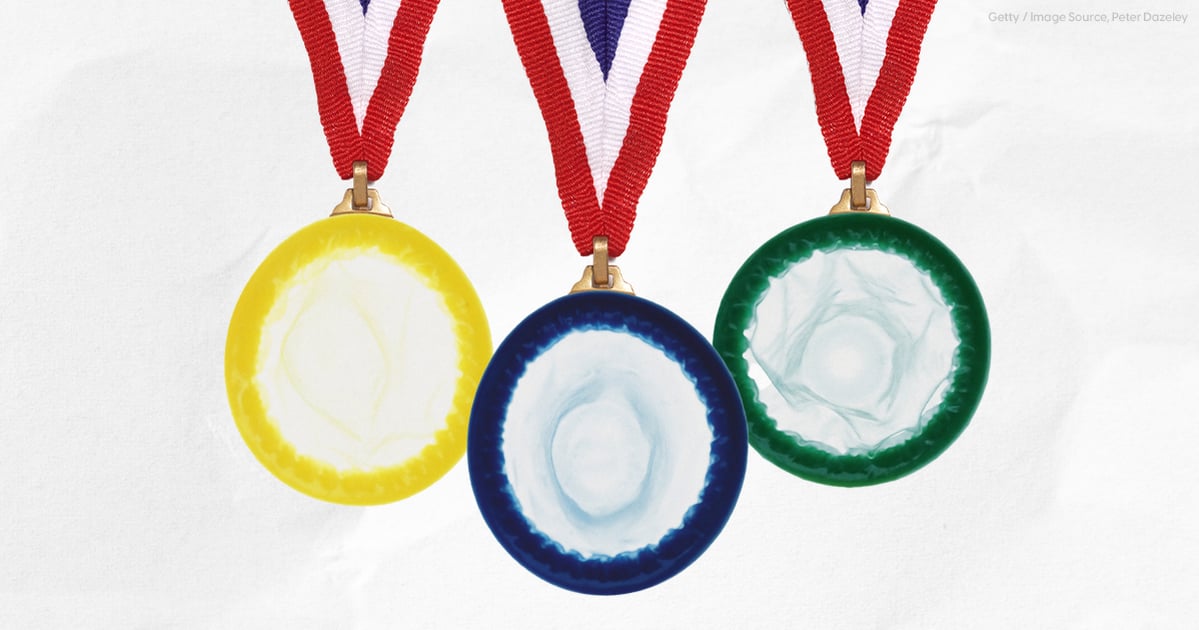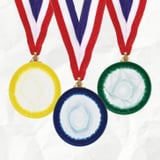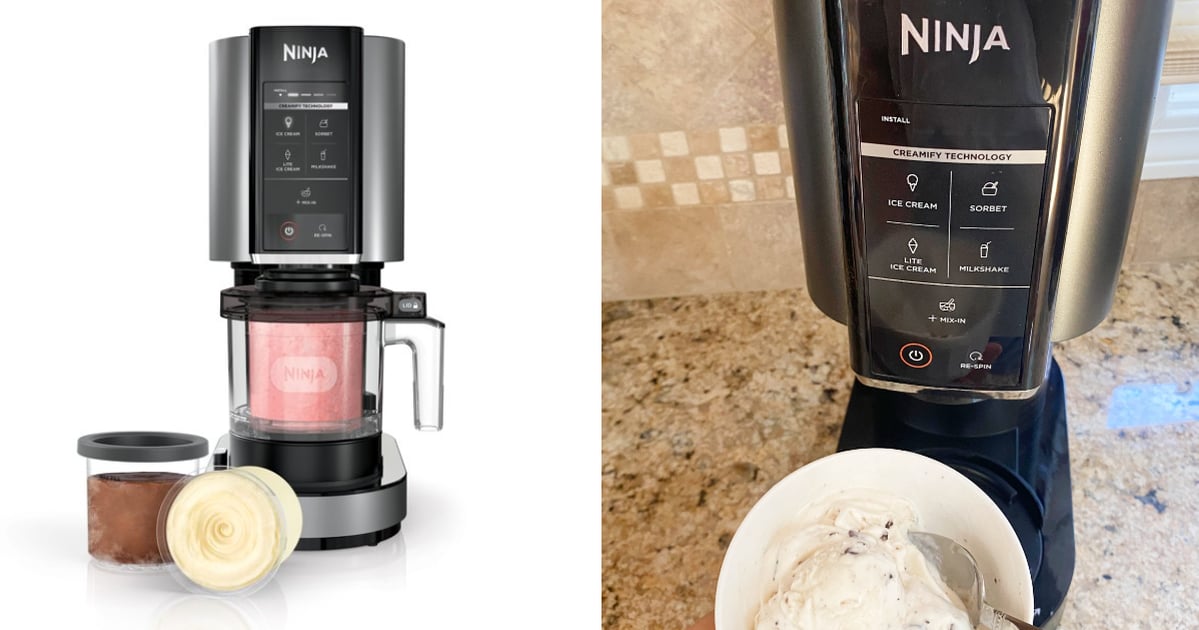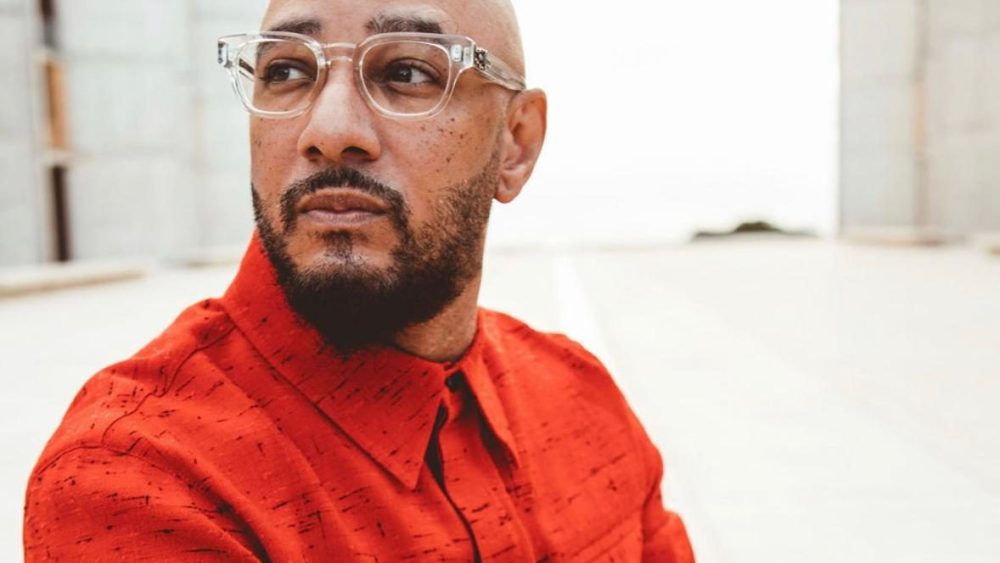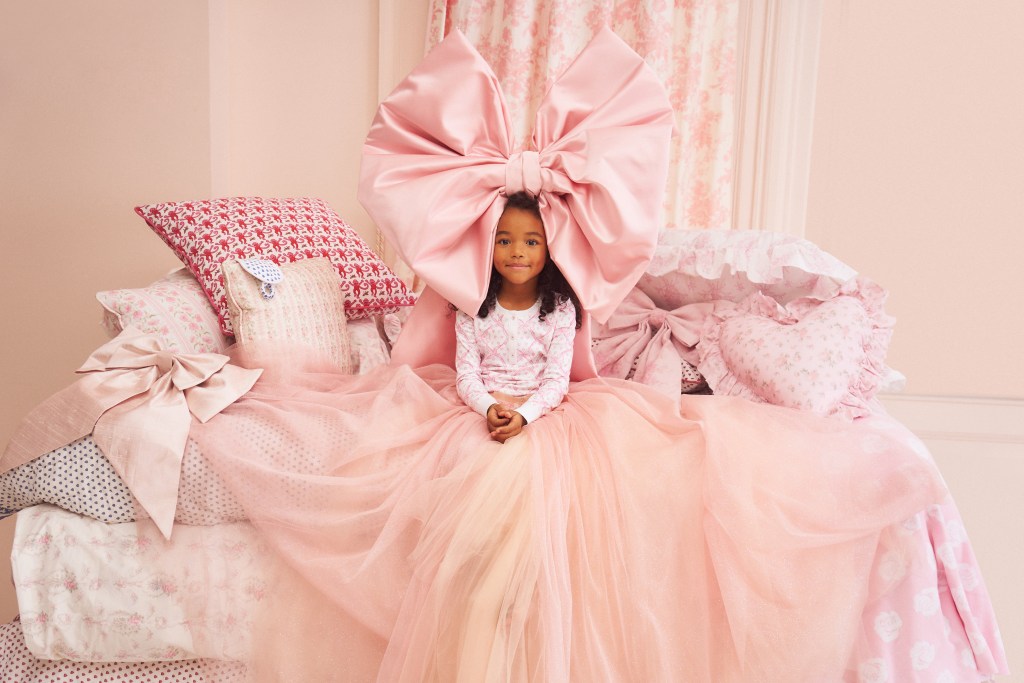The Olympic Games are near, and another sacred, long-honored tradition is returning along with them: free condoms. Every four years, the number of condoms heading to the Olympic Village becomes a hot, titillating topic – from the record-breaking 450,000 condoms at the 2016 games in Rio de Janeiro to the intimacy ban at the 2020 games in Tokyo, sex (and the amount of contraceptives) at the games always sparks a very heated, very horny discussion.
This year, Olympic Village director Laurent Michaud told Sky News that there will be a whopping 300,000 condoms available for the 10,500 athletes competing at the 2024 Paris Games (that’s almost 29 condoms per athlete, mind you). “It is important that the conviviality here is something big,” Michaud said.
Over email, a Paris 2024 spokesperson confirmed to PS that there will be 200,000 male condoms, 10,000 male condoms without latex, 20,000 female condoms, and 10,000 oral dams – all of which are accompanied with a lubricant pouch – sent to the games and available in the Village. “We don’t know how many people are likely to use them and obviously we’ll adapt to the requirements if needed,” Laurent Dalard, who’s running the first aid and health services at Paris 2024, told Agence France-Presse.
Along with the condom program, this year’s Olympics will “be rolling out a campaign to raise awareness of the main STIs and their modes of transmission at the Polyclinique des Jeux,” according to the aforementioned Paris 2024 spokesperson, and the messages will focus on consent and pleasure. There will also be screening tests, mainly for HIV, at the polyclinic, with treatment and medication available for these STIs if needed.
While seemingly salacious, condoms have been distributed at the Olympics for almost 40 years now. The first reported instance of condoms being handed out to athletes was in the summer of 1988 when the games were held in Seoul, South Korea. Around 6,000 condoms were sent to the Village to draw awareness to HIV and AIDS prevention and to promote safe sex and “healthy behaviors,” according to the International Olympic Committee. After that, you could say the rest was history, and condoms at the Olympics became a tradition.
Now, condoms aren’t handed out in the Olympic Village to encourage sexual activity, per se – again, they’re mainly brought in to raise awareness of the spread of STIs and for the athletes to bring back to their home countries. But at the 1992 summer Olympics in Sydney, it was clear that the athletes may have been getting more use out of the condoms than a sex-ed lesson.
The organizers for the Sydney games had to order 20,000 more condoms after they realized the initial 50,000 wasn’t enough for the nearly 11,000 athletes. While it’s unclear how many condoms are being used in the Village, Ryan Lochte told ESPN in 2012 that he guesses 70 to 75 percent of athletes are sexually active.
But not all athletes are amused at the spectacle the condom program brings to the games. “It is an absolutely huge allocation of condoms,” Zac Purchase, Olympic rowing gold and silver medallist, said in a 2016 interview with The Guardian. “But it is all so far from the truth of what it’s like to be in there. It’s not some sexualized cauldron of activity. We’re talking about athletes who are focused on producing the best performance of their lives.”
And while the number of condoms sent to the games varies – 130,000 in Athens 2004, 100,000 in Beijing 2008, and a whopping 450,000 in Rio 2016 – many factors of the Olympic Games are driven by local politics, including the condoms.
While the condom supplier for the games is usually kept under wraps, in 2012, Durex, a UK-based brand, was able to become the official supplier. “It really stemmed from the relationship that we had with the existing health partners in the UK government,” Bruno Funari, marketing director at Durex, tells PS. A condom brand hasn’t held that role in the same capacity since then. And while the 2012 Olympics were the only games where Durex as a brand was the official supplier, Funari says the company would be interested in returning to the Games in an official capacity again.
In 2012, rogue condoms also made their way into the Olympic Village. The public was made aware of this mishap thanks to Caroline Buchanon, an Australian BMX rider, who posted a photo of the bucket of “Kangaroo condoms” in a since-deleted tweet. “We will look into this and ask that they are not handed out to other athletes because Durex are our supplier,” a spokeswoman told The Guardian at the time.
According to Funari, Durex was able to hand out their condoms in 2012 thanks to the free vending machines available in the athlete’s dorms across the Village, which appears to be the main way to get their hands on them.
Now, although sex was “banned” at the 2020 Olympics – that were actually held in 2021 – due to the pandemic, it didn’t stop the athletes from fraternizing. “There was definitely still intimacy happening throughout that village, for sure,” Ali Gibson, a basketball player on the Puerto Rico team who attended Tokyo 2020, tells PS.
Although Gibson says condoms weren’t handed out in Tokyo, Nathan Ikon Crumpton, a skeleton racer representing American Samoa, did apparently receive a box of condoms. He posted a video to YouTube where he read aloud what was written on the box, including: “We encourage the athletes to bring them back to their respective countries to help raise awareness on the importance of preventing sexually transmitted diseases and the use of condoms as a preventative measure.”
Gibson is heading to the Paris 2024 Olympics and is, admittedly, excited about finally receiving some condoms. “Any time you get something branded with the Olympics on it, it’s a cool memento,” she says. “No matter if you get involved in intimacy or not, it’s cool to just have them for when you’re back home.”
Whether or not this will be the horniest Olympics yet is still up in the air – but at least the athletes will have enough condoms in case they get frisky.
Elizabeth Gulino is a freelance journalist who specializes in topics relating to wellness, sex, relationships, work, money, lifestyle, and more. She spent four and a half years at Refinery29 as a senior writer and has worked for House Beautiful, Complex, and The Hollywood Reporter.
